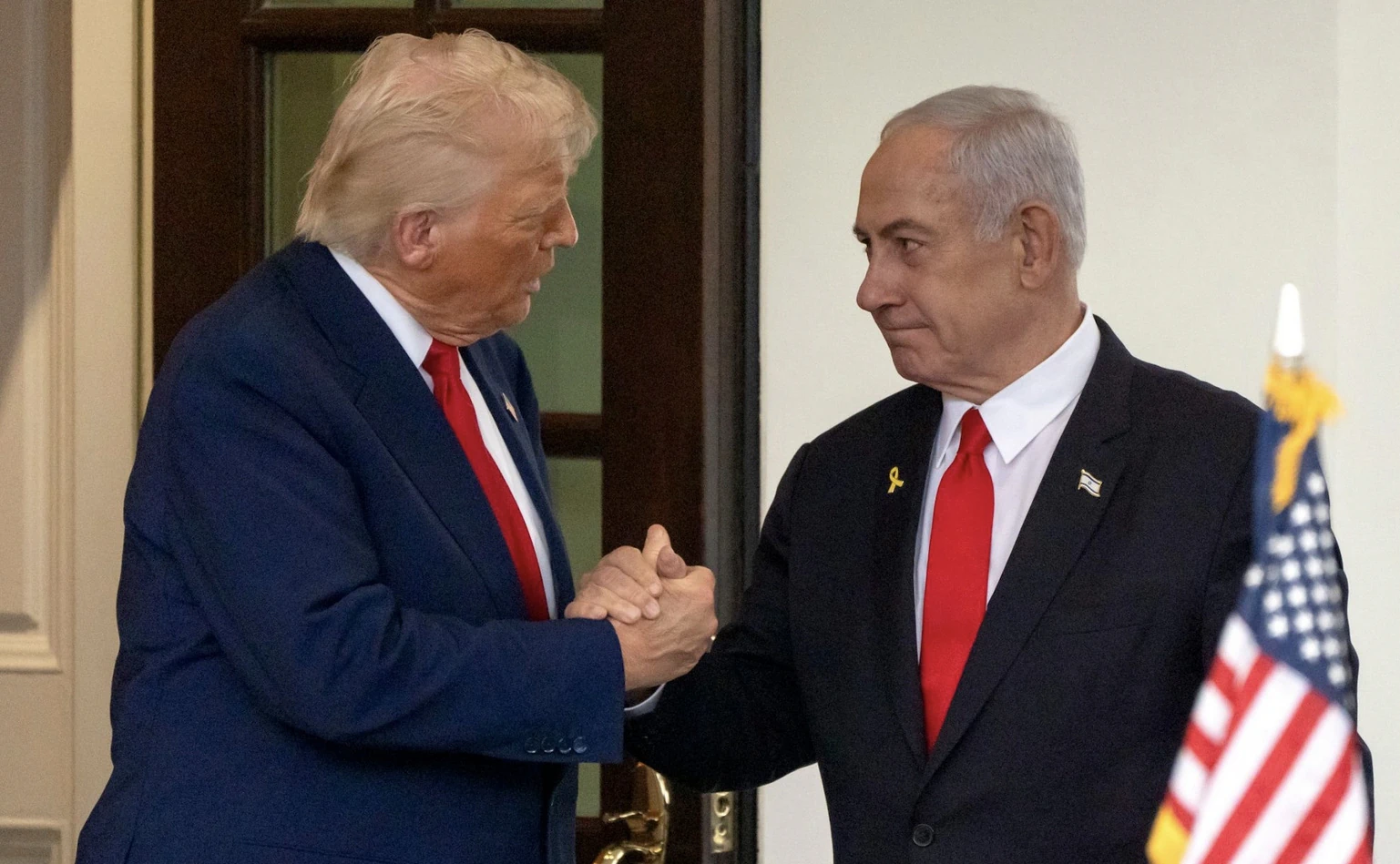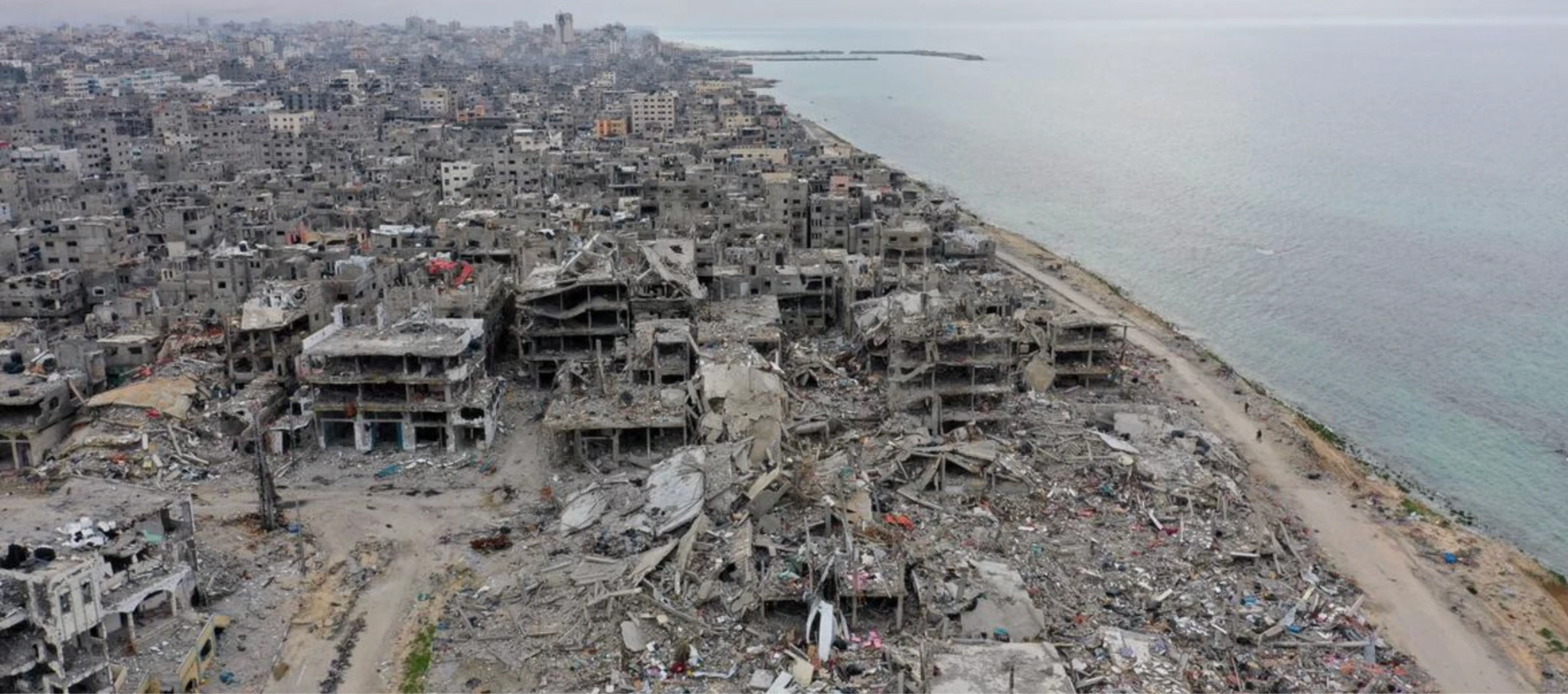After more than 500 days of war, Gaza lies in ruins. Homes and buildings partially or totally destroyed. The streets littered with debris and rubble, pock-marked and scarred by bombs, missiles, gunfire, and artillery. Civil society either collapsed or on the very brink of it. Tens of thousands dead and injured, many with nowhere to return. The war in Gaza has left devastating humanitarian consequences, strained hopes for a sustainable peace, and cast uncertainty over how (and by whom) reconstruction will be carried out. Most observers could have predicted Israeli retaliation for Hamas's October 7th attacks, though many have been taken aback by the scale of the devastation. For Israel, the conflict is a just one and many of the war's strategic aims, such as the destruction of Hamas and the return of the hostages, can be defended on multiple grounds. Justifications notwithstanding, the toll in Palestinian blood and treasure has been high. For the people of Gaza, war has become more than a political or military concept; it is a daily reality marked by displacement, death, and despair. As ceasefire negotiations falter and plans for rebuilding remain unclear, Gazans find themselves in a prolonged state of uncertainty with little sense of what tomorrow might bring.
As of the most recent reports from the United Nations and humanitarian groups on the ground, the civilian death toll has risen to over 45,000 with a significant portion of the total being women and children. More than a million Gazans have been displaced, many now crammed into overcrowded shelters or living in makeshift encampments with limited access to food, water, or medical care. Entire families have been wiped out by airstrikes, while emergency responders and doctors work under impossible conditions. Gaza's already fragile healthcare system has been pushed to the brink, with hospitals suffering power outages, supply shortages, and targeted strikes that have rendered some facilities inoperable.
Infrastructure has been crippled. Water treatment plants, electrical grids, and sewage systems have been bombed or rendered unusable, further exacerbating the humanitarian crisis. Schools have been destroyed or repurposed into emergency shelters, cutting children off from any semblance of normal life. Markets, bakeries, and mosques lie in ruins. Beyond the visible destruction, the psychological toll is immeasurable. Children who have known nothing but blockade and bombardment now endure deeper trauma, while families live in constant fear with nowhere to go and no one to turn to.
Gazans had received a slight respite during the negotiated ceasefire this past January, which provided time and space for the delivery of much needed humanitarian aid. Hostilities resumed late in March after Israeli and Hamas disagreement over the next phase of negotiations. Still, international actors are once again attempting to broker a pause in fighting, with Egypt, Qatar, and the United Nations leading mediation efforts. Under the Biden administration, American policy had been one of support for its ally, but also pressure, when it believed that Israel had neglected its humanitarian responsibilities in its conduct of the war. This in contrast to the approach from President Trump, whose calls for restraint have been nonexistent. Yet even as world leaders issue statements calling for restraint, the situation on the ground shows little sign of abating.
 Donald Trump and Benjamin Netanyahu Credit: Mark
Schiefelbein/Associated Press
Donald Trump and Benjamin Netanyahu Credit: Mark
Schiefelbein/Associated Press
Israel maintains, for good reason, that any ceasefire must be predicated on the disarmament or dismantling of Hamas, which it deems a terrorist organization and the root cause of the conflict. Hamas, for its part, has issued preconditions of its own, including the lifting of the blockade and international guarantees of sovereignty. The Palestinian Authority, completely sidelined in Gaza, continues to push for a broader political resolution, which includes Palestinian sovereignty, but its authority and credibility remain limited.
Even if a temporary truce is achieved, prior history has shown such agreements are fragile at best. Ceasefires in Gaza are often more about tactical pauses than concrete steps toward peace. Without a comprehensive agreement that addresses the root causes of the conflict-occupation, terrorism, governance, and recognition-any halt in fighting risks being only a brief reprieve. The absence of an articulated implementable political vision from either side would make any talk of peace feel like an illusion to those who continue to suffer.
Moreover, domestic political pressures in both Israel and Gaza play a significant role in delaying any potential ceasefire. For Israeli leadership, backing down without visibly neutralizing Hamas would be politically costly both to Prime Minister Benjamin Netanyahu and his political coalition. Meanwhile, Hamas draws strength from the narrative of oppression and resistance, and a ceasefire without concessions could weaken its credibility among supporters. For the everyday people of Gaza, the machinations of so many in power are so much air, and just as intangible, only serving to further delays and suffering. Each failed negotiation means more bombs, more devastation, and more despair. The longer ceasefire talks drag on without results, the deeper the public mistrust grows—not only toward the parties to the conflict but also toward the international community that is seen as either impotent or complicit.
Despite the continuation of the conflict, the post-war environment with respect to reconstruction in Gaza is an urgent necessity. Though even this remains a contentious topic with wide reaching political and social ramifications. As is his wont, President Trump, unhelpfully proposed the near complete and total transfer or Gaza's remaining population, going so far as to post an AI generated video to his Instagram account depicting a rebuilt French Riviera themed Gaza. Where the population of Gaza would be sent to has remained unclear. With all Trump policies, we are left to our own devices in attempting to figure out how seriously his proposal is meant to be taken.
 Trumps vision for Gaza is
surprisingly progressive.
Trumps vision for Gaza is
surprisingly progressive.
The destruction of civilian infrastructure has made life unlivable for hundreds of thousands. Aid organizations emphasize that humanitarian access and coordination are essential to avert further catastrophe. However, the delivery of aid is complicated by Israel's blockade on materials entering Gaza, fears that supplies could be diverted to rebuild Hamas's military infrastructure, and the lack of a functioning, unified governance body capable of overseeing reconstruction.
This notwithstanding, President Trump's proposal was largely met with disapproving reactions from the international community, particularly from the Arab League. The idea of the United States annexing Gaza is not only impractical but would also be deeply unpopular across the American political spectrum. Both U.S. political parties, regardless of their differences on Israel or Palestine, would be unwilling to take responsibility for governing Gaza, especially given its complex humanitarian and security challenges. Historically, the U.S. has avoided direct colonial-style occupations in the Middle East, and there is no strategic or domestic incentive to reverse that policy now.
Moreover, the primary responsibility for Gaza's future lies with regional players, not Washington. The Trump administration, like its predecessors, should support efforts led by Egypt, Jordan, and other Arab countries rather than assume direct control. Even humanitarian efforts are carefully designed to be multilateral, avoiding any perception of a U.S. occupation, which would only inflame anti-American sentiment and complicate regional diplomacy. Any long-term solution for Gaza must come from within the region and involve a stable, Palestinian-led governance structure, possibly with external security guarantees. Simply put, America’s role will remain one of facilitator and supporter, not occupier. Any speculation about U.S. annexation misunderstands both American political realities and the deeper strategic context in the Middle East.
In response and to counter Trump's proposal, Egypt unveiled a comprehensive $53 billion plan aimed at reconstructing Gaza over a five-year period. The initiative focuses on rebuilding infrastructure, providing humanitarian relief, and restoring governance without displacing the Palestinian population. The plan proposes the establishment of a technocratic Palestinian administration to oversee the reconstruction efforts, intentionally excluding Hamas from governance roles. This approach seeks to reintegrate the Palestinian Authority into Gaza's administration, promoting stability and long-term development.
The Egyptian proposal has garnered support from the Arab League and several international actors, including European nations and the Organization of Islamic Cooperation. It stands in contrast to Trump's plans that suggest the relocation of Gaza's residents, emphasizing instead the importance of rebuilding the enclave in situ. The plan outlines a phased approach: an initial six-month period focusing on immediate relief and temporary housing, followed by several stages of reconstruction addressing housing, infrastructure, and economic revitalization.
 © UNRWA/Destruction in northern Gaza.
© UNRWA/Destruction in northern Gaza.
Despite its ambitious scope, the plan faces challenges, particularly regarding the exclusion of Hamas and the reintroduction of the Palestinian Authority, which may encounter resistance from various factions. Additionally, securing the necessary funding remains a significant hurdle, with uncertainties about contributions from Gulf states and other potential donors. Nevertheless, Egypt's initiative represents a concerted effort to address the humanitarian crisis in Gaza through reconstruction and governance reforms, aiming to lay the groundwork for lasting peace and stability in the region.
International donors, including the European Union, Gulf countries, and the United States, have pledged financial assistance. Yet these funds often come with conditions, and the debate continues over who will manage the money and the projects it supports. Proposals have ranged from establishing an independent international body to placing reconstruction under the oversight of the Palestinian Authority—both options presenting logistical and political hurdles. Meanwhile, some advocates argue that reconstruction must be linked to a broader political settlement, while others insist that aid must not be held hostage to diplomacy.
Beyond the logistics of funding and material delivery, the question of who leads the reconstruction effort has become a flashpoint. Hamas’s control over Gaza is a major obstacle for many Western donors, who fear that reconstruction funds may empower the very group that contributed to the conflict. Yet sidelining Hamas entirely presents practical problems, as it remains the de facto authority with control over key institutions and infrastructure. This paradox puts international actors in a bind—how to rebuild without legitimizing or enabling the existing power structure.
Adding to the complexity are the voices of civil society within Gaza, which are often excluded from high-level planning. Local NGOs and community leaders argue that meaningful reconstruction must be participatory and transparent, ensuring that aid reflects the needs of ordinary Gazans rather than the agendas of foreign donors or political factions. Their exclusion from the process not only risks misaligned priorities but could also sow seeds of further discontent. Then there are the concerns that reconstruction efforts will replicate past failures. After previous wars, large sums of international aid were pledged but either poorly managed or never fully delivered. Bureaucratic delays, political infighting, and lack of oversight left many projects incomplete, and the population disillusioned. For Gaza’s residents, genuine reconstruction must involve more than rebuilding walls—it must restore dignity, agency, and a long-term vision for peace and development.
Gaza stands today not only as a site of immense physical destruction but as a symbol of political paralysis and international failure. The toll of this war extends beyond the immediate deaths and injuries; it is seen in the broken lives, the mental scars, and the erosion of any trust in a peaceful future. The conversations around ceasefires and reconstruction must move beyond technicalities and toward a serious engagement with justice, sovereignty, and dignity. Peace, if it is to come, must not simply be imposed through silence of arms but must be built on a foundation of recognition and inclusion. The people of Gaza are not merely victims or bystanders in a geopolitical chess game-they are human beings entitled to security and self-determination. Until the global community addresses those deeper truths, Gaza will remain trapped in its cycle of devastation.